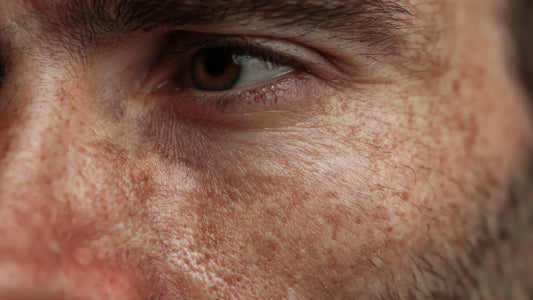
Why hyaluronic acid is not just hyaluronic acid
Studies prove it: Skin care with hyaluronic acid is effective against wrinkles. It acts like a water reservoir in the skin and ensures elasticity and resilience. What many people don't realise: Hyaluronic acid is not just hyaluronic acid. Find out what it's all about in this blog post.
Hyaluronic acid and the consequences of a deficiency
Hyaluronic acid occurs naturally in the body and is an essential component of various types of connective tissue. Hyaluronic acid is characterised in particular by the fact that it can bind enormous amounts of water: Up to 6 litres of water per gram of hyaluronic acid! When combined with water, it forms a gel-like material which acts as a lubricant in our joints, for example. With increasing age, the amount of hyaluronic acid in our body decreases. This can manifest itself, for example, in cracking joints, which give us an indication that the hyaluronic acid is disappearing from the synovial fluid. In particular, however, the skin also loses moisture and elasticity as the hyaluronic acid content dwindles. This can lead to wrinkles. However, if the skin is always supplied with hyaluronic acid from the outside over a longer period of time, it regains its elasticity and wrinkles are reduced.

Bigger is not always better
Hyaluronic acid occurs in different sizes. In the body, for example, it is usually a long-chain compound with a high molecular mass. In skin care, however, hyaluronic acid with a short-chain compound has proven to be more favourable. This is because it has a lower molecular mass and can therefore penetrate deeper into the skin. A rough distinction can be made between two sizes: high-molecular hyaluronic acid and low-molecular hyaluronic acid. The rule of thumb is: the smaller the hyaluronic acid chains, the deeper hyaluronic acid can penetrate into the skin. High-molecular hyaluronic acid in particular has a superficial and only short-term effect. Low-molecular hyaluronic acid, on the other hand, has a lasting anti-wrinkle effect as it is stored in the connective tissue of the skin. It is therefore more effective than high-molecular hyaluronic acid, especially in the long term.
Hyaluronic acid in Jungkraut products
It is not normally possible to recognise which hyaluronic acid is contained in skin care products purely by looking at the ingredients. Low-molecular hyaluronic acid is far more expensive than high-molecular hyaluronic acid, which is why only high-molecular hyaluronic acid is usually found in cheaper skincare products. At Jungkraut, we prioritise high-performance actives for maximum and long-lasting effects. For this reason, we use low-molecular hyaluronic acid for our Alpine Performance Face Fluid and the Glacier Active Eye Serum. This is always in combination with antioxidants and other actives that strengthen our skin flora and thus the natural skin barrier. Because hyaluronic acid alone is not enough to protect our skin and prevent it from losing moisture.



